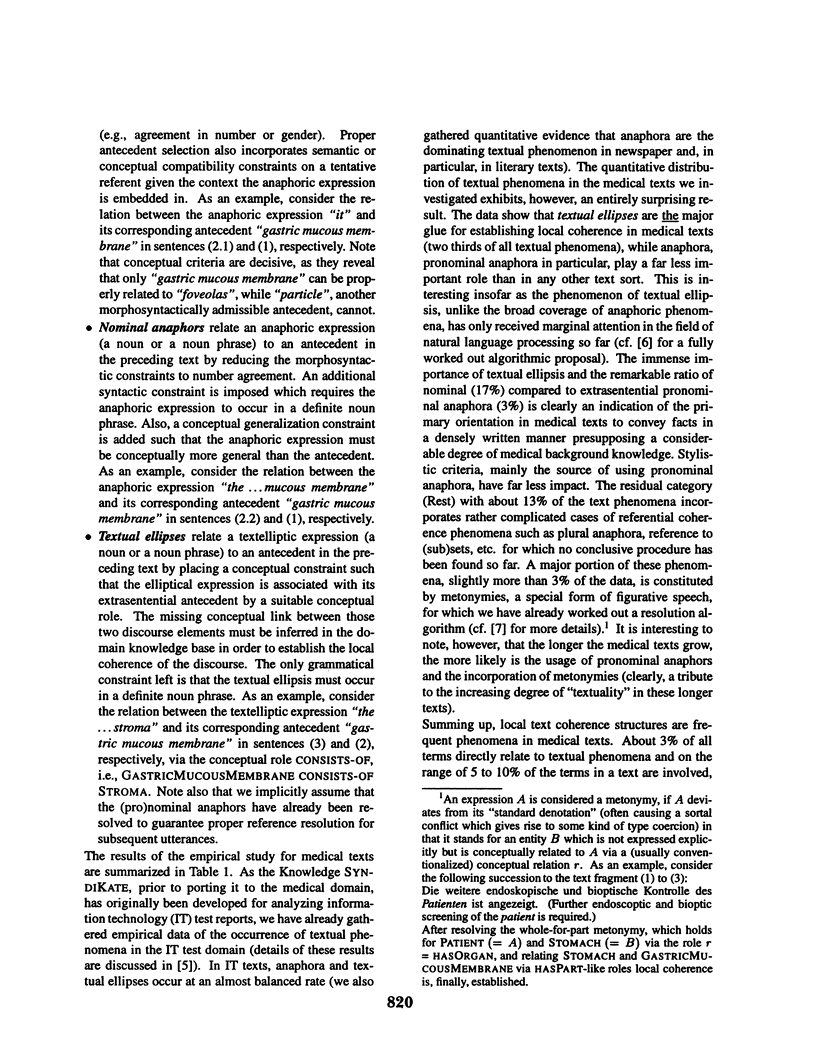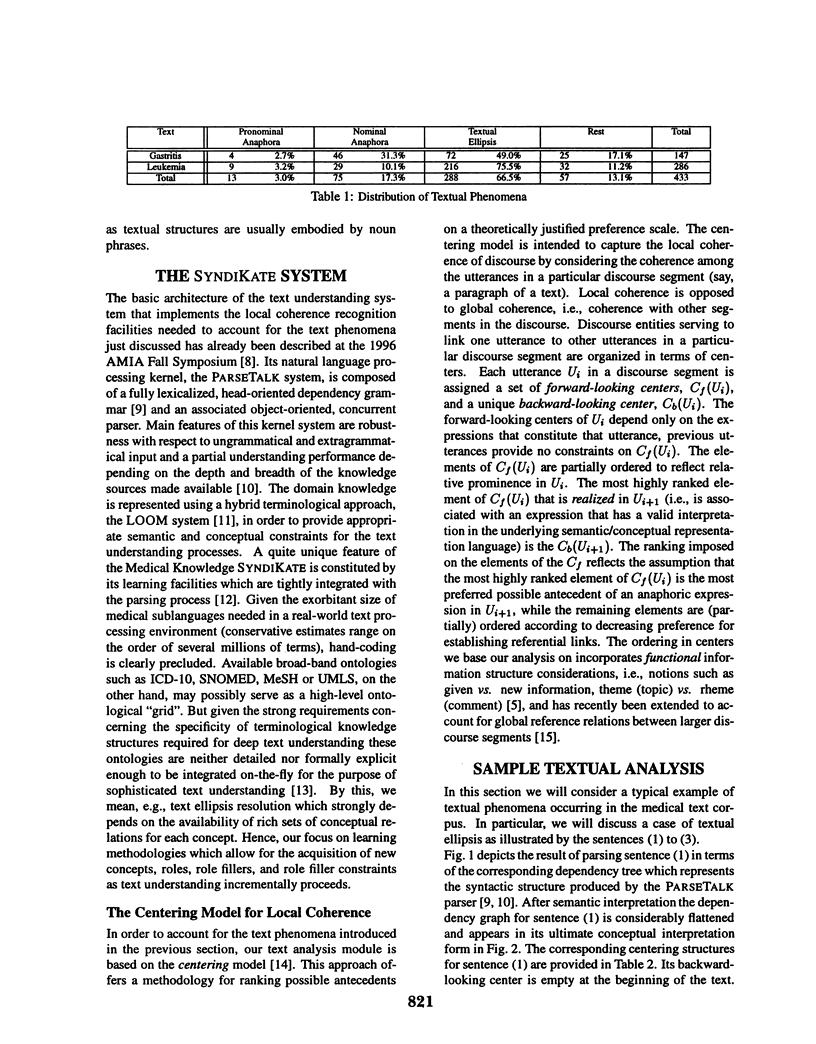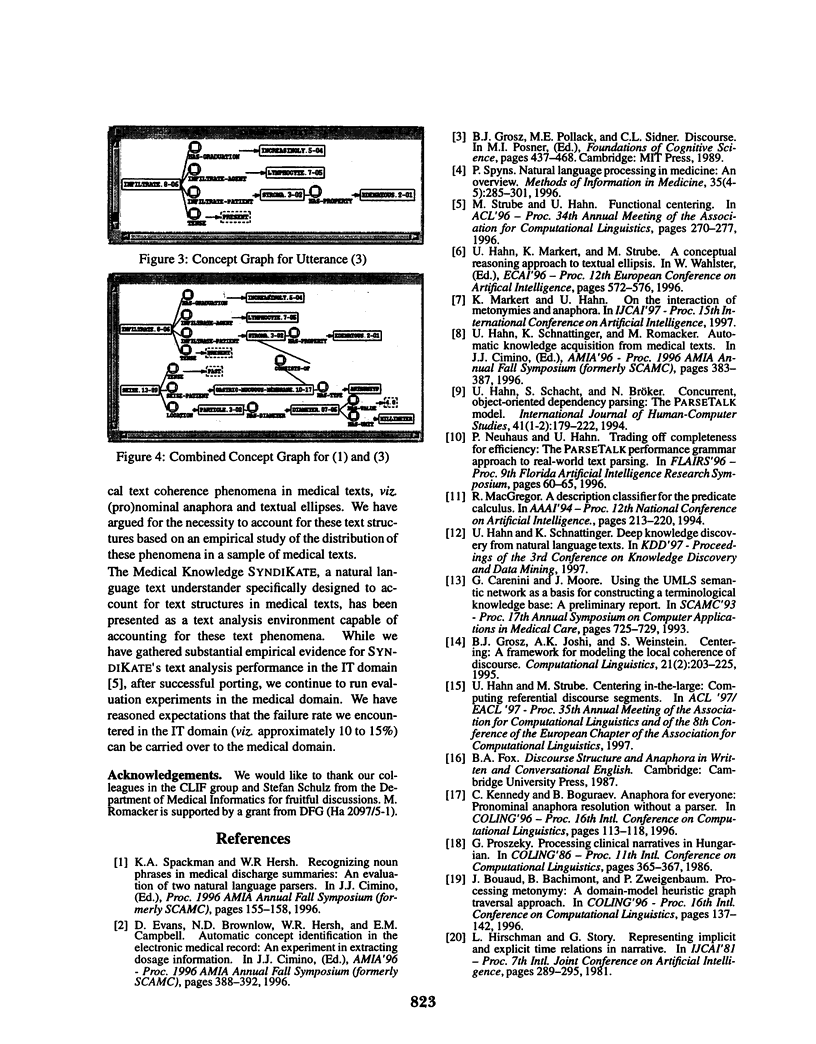Abstract
We consider the role of textual structures in medical texts. In particular, we examine the impact the lacking recognition of text phenomena has on the validity of medical knowledge bases fed by a natural language understanding front-end. First, we review the results from an empirical study on a sample of medical texts considering, in various forms of local coherence phenomena (anaphora and textual ellipses). We then discuss the representation bias emerging in the text knowledge base that is likely to occur when these phenomena are not dealt with--mainly the emergence of referentially incoherent and invalid representations. We then turn to a medical text understanding system designed to account for local text coherence.
Full text
PDF




Selected References
These references are in PubMed. This may not be the complete list of references from this article.
- Evans D. A., Brownlow N. D., Hersh W. R., Campbell E. M. Automating concept identification in the electronic medical record: an experiment in extracting dosage information. Proc AMIA Annu Fall Symp. 1996:388–392. [PMC free article] [PubMed] [Google Scholar]
- Hahn U., Schnattinger K., Romacker M. Automatic knowledge acquisition from medical texts. Proc AMIA Annu Fall Symp. 1996:383–387. [PMC free article] [PubMed] [Google Scholar]
- Spackman K. A., Hersh W. R. Recognizing noun phrases in medical discharge summaries: an evaluation of two natural language parsers. Proc AMIA Annu Fall Symp. 1996:155–158. [PMC free article] [PubMed] [Google Scholar]
- Spyns P. Natural language processing in medicine: an overview. Methods Inf Med. 1996 Dec;35(4-5):285–301. [PubMed] [Google Scholar]


